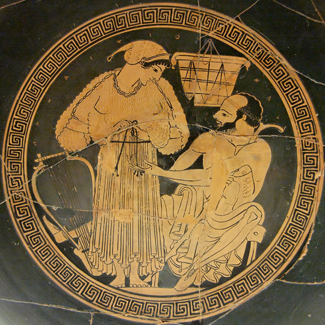7 Conventions of representation
In this section you look at the question of different conventions of representation. In particular we note what have been the dominant representational conventions in Western art perspective
In E.H. Gombrich’s celebrated textbook The Story of Art, first published in 1950, as well as in numerous other books before and since, the Western tradition is traced back to Athens in the fifth century BC. Gombrich does not begin his book in Greece, but when he does get there, Chapter 4 is called ‘The great awakening’. For Gombrich and others, what the Western tradition of art ‘woke up’ to was lifelikeness.
Although the comparative verisimilitude of Classical art was subsequently lost in the centuries of Christian influence, its rediscovery and amplification in the emerging humanistic climate of fifteenth-century Florence is held to exemplify the ‘Renaissance’. This cornerstone of the Western tradition represents a synthesis of Christian belief and Classical knowledge that continued to define Western culture up to the twentieth century. Its distant origin in the Greek achievement of lifelike imitation (Figure 25) was a symptom of what Gombrich called ‘altogether the most amazing period of human history’, a time of the emergence of democracy in politics and of rational enquiry in philosophy and science.

It is with a nicely studied bathos that Gombrich isolates the equivalent advance in art, a ‘tremendous moment in the history of art’ when, around 500 BC, ‘artists dared for the first time in all history to paint a foot as seen from the front’ [53]. In a word, artists discovered the device of ‘foreshortening’.
